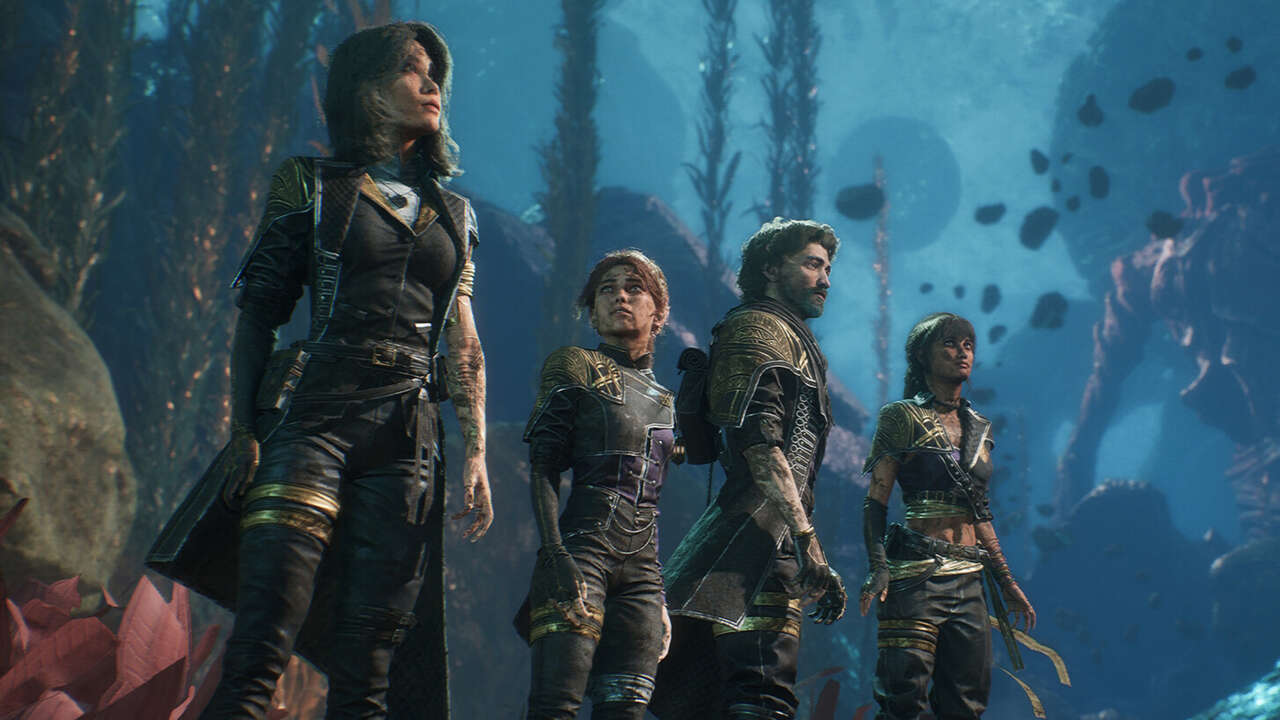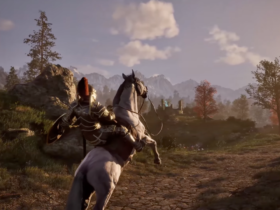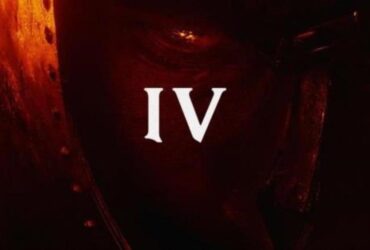Everybody dies. It’s the one thing we all have in common. Most of us won’t know when it will happen, but that’s not the reality for those living with a terminal diagnosis. Though the estimated timeframe isn’t exact, that doesn’t really matter when faced with a death sentence. Over the past year, I’ve become all too familiar with terminal illness and its inevitable conclusion. It’s an odd thing to live through; on one hand, I was essentially grieving for someone who was still alive, while on the other, I was trying to stay positive and act as if everything was normal for their sake, savoring each and every moment I still had left with them. Because of this experience, I instantly resonated with Clair Obscur: Expedition 33 and its unusual premise. Developed by French studio Sandfall, this turn-based RPG introduces a world where humanity faces a collective terminal diagnosis, of sorts. It’s a moving tale, complemented by engaging combat that blends aspects of traditional JRPGs with reactive, parry-heavy action.
The origins of Clair Obscur’s premise begin 67 years prior to the start of the game’s story, when a cataclysmic event known as the Fracture destroyed the Continent and shattered the land into pieces. One of those pieces is the city of Lumière, a surreal facsimile of Belle Époque era Paris, where landmarks like the Eiffel Tower and Arc de Triomphe have been twisted, warped, and broken by the fantastical effects of the Fracture. The last remaining humans reside in Lumière, but with each passing year, humanity edges closer to extinction due to an ominous entity called the Paintress. Each year, this embodiment of death carves a new number into the monolithic structure looming on the horizon, and then a year later, everyone of that age dies. For 67 years, she’s been counting down. Clair Obscur’s prologue concludes with every 34-year-old disintegrating into dust and crimson petals as the Paintress moves onto number 33.
There’s almost no one alive in Lumière who hasn’t been touched by death in some way. The city’s orphanages are overflowing with children, as couples debate whether to have kids of their own to keep humanity going or choose not to bring new life into such a bleak world. Some are at ease with death and content to live out their days managing market stalls or creating art on canvases and with musical instruments. Others dedicate their lives to researching new technologies and weapons to aid the expeditions that venture onto the Continent each year with the goal of killing the Paintress and preventing extinction. For those with one year left to live, joining an expedition is an appealing choice. The success rate might stand at 0%, with all previous expeditions failing to stop the Paintress or even return home, but what else do they have to lose?
As part of the titular expedition 33, it’s your job to finally succeed and save humanity where others have failed. Venturing into this strange and unknown world sets up a fantastic story that wades into the waters of loss, grief, family–the one we’re born into and the one we choose–and the role art can play in helping us come to terms with and cope with death. Much of this is achieved through a fully fleshed-out and three-dimensional cast of characters, each bringing something unique to the table. From Sciel’s infectious optimism in the face of so much melancholy to Lune’s ambitious drive to unravel the mysteries of the Paintress, you’ll gradually unravel how each character came to be who they are by conversing around the campfire and delving into their backstories.
Getting to know your party of characters is one of Clair Obscur’s intimate joys, and is only enhanced by an emotionally compelling narrative full of effective surprises and unforgettable moments. It’s not always as dour as it sounds, either, leaving room for genuine moments of levity amid its very human examinations of mortality. With a voice cast that includes Charlie Cox, Jennifer English, Kirsty Rider, Shala Nyx, Ben Starr, and Andy Serkis, among others, it’s no surprise that these characters are brought to life with heart and an understated gravitas. Despite the fantastical setting and surreal circumstances, Clair Obscur’s story and characters feel authentic and distinctly human.
That humanity is noticeably absent from the faceless entities that make each expedition such a treacherous affair. Fortunately, your steadily expanding party is well equipped to deal with most threats, which is where Clair Obscur’s “reactive turn-based combat” comes to the forefront. At first glance, the basics of battle resemble any number of classic JRPGs. You can use base attacks, ranged strikes–for targeting weak points and flying enemies–cast various skills, and use different items for, say, healing or buffing damage. Each party member has a pool of action points to spend on either ranged attacks or skills, while base attacks and parries replenish AP.
Where Clair Obscur deviates is in the “reactive” part of its turn-based combat. Base attacks and item use are the only commands that don’t require any additional input from the player. Everything else challenges you to engage in quick-time events to maximise the impact of both your offensive and defensive skills, ensuring that you’re constantly engaged in every aspect of combat. Rather than sitting idly by and watching the action unfold, it makes you an active part of each sword swing and conjured fireball. These QTEs don’t feel perfunctory either, introducing a kinetic sense of rhythm to each battle that helps build momentum and keeps combat feeling light on its feet.
When it’s the enemy’s turn to attack, there are similar ways to affect combat and swing the outcome in your favor. Clair Obscur’s parry system is not too dissimilar from the one in From Software’s Sekiro: Shadows Die Twice. Each enemy type has distinct attacks and combos with specific timing windows for you to be wary of. By parrying one or multiple attacks in a row, not only will you nullify all damage and earn AP, but you’ll also follow up with a devastating counterattack of your own. This is easier said than done, of course, with a tight window to respond to any incoming attacks. While it’s definitely possible to react in time, much of combat is centered around building muscle memory through familiarity and repetition, particularly when enemies attempt to throw you off with staggered timing and tricky feints.
[Expedition 33 is a] turn-based RPG [that] introduces a world where humanity faces a collective terminal diagnosis, of sorts … It’s a moving tale, complemented by engaging combat that blends aspects of traditional JRPGs with reactive, parry-heavy action
Dodging is a safer option due to a more generous timing window, and is a good way to learn an enemy’s attack patterns before attempting to parry each successive strike. However, dodging lacks the follow-up riposte and doesn’t earn any AP unless you’re using a skill loadout that allows it, so parrying is still the most effective option.
It’s also worth mentioning that blocking enemy attacks is just incredibly satisfying, as each successful parry is met with an explosive clash of particle effects and crunchy sound design. Not to mention the stylish counter attacks that follow, either from individual party members or the whole group in unison. Not every attack can be parried, though, with jump attacks–which are telegraphed and function similarly to Sekiro’s Mikiri Counters–and special Gradient Attacks keeping you on your toes.
Incorporating these active elements into a traditional turn-based combat system is nothing new, dating back to games like Paper Mario and Lost Odyssey, as well as newer titles such as Sea of Stars and Yakuza: Like a Dragon. But no other game demands as much precision and focus as Clair Obscur, to the point where your input in each battle is comparable to a dedicated action game. It’s a bold but confident approach that pays off in spades, executed with a real eye for visual flair and showmanship. In fact, this might be the first turn-based RPG where “no damage” runs are possible. And for those who want or need it, there are also three difficulty levels that adjust the timing windows to make them more generous or even tighter, alongside an accessibility option that auto-completes all your offensive commands, removing QTEs entirely.
While the immediacy of parrying and nailing the timing of its rhythmic offence will always be at the front of your mind, there’s also a lot of depth beneath Clair Obscur’s turn-based systems. Much of this is derived from the party members themselves, introducing a wealth of tactical thinking as you begin to experiment with their individual skill sets and see how they synergize. Each one is mechanically unique, despite fitting into genre-specific molds. Gustave, for instance, is an all-around damage dealer, with skills geared towards increasing damage for himself and others. Yet he’s also equipped with a special power called Overdrive, where any skills you land will charge up his mechanical left arm until you’re able to unleash a powerful lightning attack.
Lune, on the other hand, is essentially a mage, able to summon a variety of elemental skills. Each one leaves a Stain that can be consumed by other attacks for additional damage. This incentivises you to plan ahead by using skills in conjunction with others. An enemy might be resistant to ice attacks, for example, but hitting them with an icy blast will allow you to inflict greater damage later on when the ice Stain interacts with a flame attack.
Then there’s Maelle, whose épée attacks revolve around one stance flowing into another to boost different effects and bonuses. Meanwhile, Sciel can apply Foretell to enemies and then consume it, building both sun and moon charges to deal additional damage and accrue more AP. Elsewhere, there’s another party member who resembles Dante from Devil May Cry if he showed up in a turn-based game. Dealing and avoiding damage contribute to a rating system that ranges from D to S rank. The higher the rank, the more damage you inflict, but some skills are also more effective when used at specific ranks.
If this sounds overwhelming, don’t worry, as mastering each character is incredibly intuitive. And, once you’re comfortable, you can begin experimenting with how they all synergize to create various combos. You might use one of Lune’s fire skills on an enemy, allowing Maelle to use a skill that switches her to Virtouse stance when damaging a burning target. This stance boosts her damage by 200%, which you can then increase even further by using Gustave’s “Mark” skill, where the next attack deals an additional 50% damage to any marked enemy. Combine this with Clair Obscur’s active systems, and each battle is infused with a rousing energy that makes it easy to slip into an intoxicating flow state. It’s dynamic and utterly fantastic, building a strong foundation of turn-based combat and then enhancing it with familiar mechanics from a genre you probably wouldn’t expect.
The enemies you’ll face are an eclectic bunch, too. From creepy mimes inspired by French Belle Époque to patchwork creations and nightmarish eldritch monstrosities. Clair Obscur’s bosses are a highlight, frequently introducing unique systems that act like small combat puzzles for you to solve. I don’t want to spoil too much, but one early boss grows multiple flowers throughout the fight that it can absorb to generate shields, forcing you to use ranged attacks to destroy the plants before it can utilize them. Another towering foe, known as the Bourgeon, challenges you to adapt on the fly after eating your party members until there’s only one left. The music throughout is also phenomenal. Whether it’s a wistful piano piece, a jaunty battle tune led by an accordion, or a mixture of traditional French music with contemporary touches.
When you’re not in the throes of battle, you’re free to explore the diverse locales that make up the Continent. While not quite as linear as Final Fantasy XIII, Clair Obscur’s level design is fairly straightforward, funneling you down corridors and into slightly wider areas with enemies that are difficult to avoid. There are optional dead ends containing the likes of money, weapons, upgrade materials, and challenging battles for you to seek out, but these are minor diversions from the main path. There’s some simple light platforming, too, as anything more complex wouldn’t hold up to much scrutiny–which is evident in a side activity that’s essentially a smaller version of the game Only Up.
The world itself is visually stunning, however, somewhat compensating for how mechanically uninteresting it is to explore. Many of the locations you’ll venture into are eerily dreamlike, blending natural and man-made structures in unexpected ways. There’s a coral reef area that looks like it’s underwater, only you’re able to simply walk through it. Strands of seaweed ripple upwards alongside bubbles, while whales and other sea life pass by overhead. There are vibrant forests with otherworldly trees draped across the skyline; opulent theatres now eroding and covered in sand; and hexagonal sea cliffs reminiscent of Giant’s Causeway, interspersed with crumbling buildings and out-of-place street signs.

Gallery
There’s also an overworld hub connecting all of these disparate environments together. Emerging into it for the first time felt like stepping onto the grassy plains outside Midgar 28 years ago. When traversing this overworld, the camera pulls back to an isometric viewpoint as a giant version of Gustave looms over a miniature rendition of the Continent. It’s nostalgic but functional. There are shortcuts to uncover, and plenty of optional areas where you’ll find quick minigames and some of the toughest bosses the game has to offer. I do wish it tracked side objectives, though. There were a few moments when I forgot where certain characters were or had no idea what they wanted me to do, leading to some time-consuming searching. You also can’t compare weapons in shops, which is a relatively minor complaint, but stands out as another quality-of-life aspect that could be improved.
When you factor in the voice talent involved, the visual splendor on offer, and the sheer scale of the whole game, it really feels like Clair Obscur is punching above its weight, considering the comparatively small size of the team at Sandfall. This is a supremely confident game that reinterprets familiar mechanics with an imaginative eye. Its combat is a consistent delight, delivering thrills with thoughtful strategy and reactive action in equal measure, complementing a heartfelt story of shared grief and camaraderie. There are minor pitfalls in relation to its narrow exploration and some quality-of-life issues, but these missteps aren’t enough to significantly detract from a game with all the makings of an RPG classic.










Leave a Reply